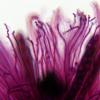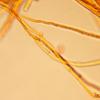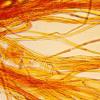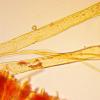
31-12-2025 19:27
Collected from loamy soil, at waterside (completel

30-12-2025 16:44
Pascal DucosBonjour,Une anamorphe rose stipitée, très nombre

30-12-2025 17:14
 Bernard CLESSE
Bernard CLESSE
Bonjour à toutes et tous,Pourriez-vous aider Albe

29-12-2025 10:15
Hulda Caroline HolteHello, I found and collected this propoloid ascom

30-12-2025 09:04
Hello.A Pyrenomycete sprouting sparsely but very d

29-12-2025 17:44
Isabelle CharissouBonjour,J'aimerais savoir si d'autres personnes au

12-11-2021 00:03
Lepista ZacariasHi everybody,A week ago in my fiels trip I noticed
Demande
René Dougoud,
27-05-2015 09:48
J'ai trouvé dans Mycologia 71, 1979, un article de R.J. Bandoni: Safranin O as a rapid nuclear stain for fungi. (chez Cyberliber)
Ma demande : Avez-vous de l'expérience avec ce colorant nucléaire ?
Merci de vos réponses
René
Carmel Sammut,
28-05-2015 18:41
Re : Demande
Hi René,
I don't know if this is of any help. I have tried using o-safranin as a counterstain with toluidine blue. It didn't work but I use this mix for thin structure like paraphyses (in the attached photo from Propolis farinosa). It tends to overstain quickly.
I tried simple staining with o-safranin alone but I am not sure what I should see. I rarely use acetocarmine stains as I get mixed results with precipitates and unclean slides. I am attaching some tests on a Tarzetta - cupularis or gaillardiana (some spores are in the 26-27µm range). The stain was a 1% water solution added near the coverslip.
I don't know if this is of any help. I have tried using o-safranin as a counterstain with toluidine blue. It didn't work but I use this mix for thin structure like paraphyses (in the attached photo from Propolis farinosa). It tends to overstain quickly.
I tried simple staining with o-safranin alone but I am not sure what I should see. I rarely use acetocarmine stains as I get mixed results with precipitates and unclean slides. I am attaching some tests on a Tarzetta - cupularis or gaillardiana (some spores are in the 26-27µm range). The stain was a 1% water solution added near the coverslip.






